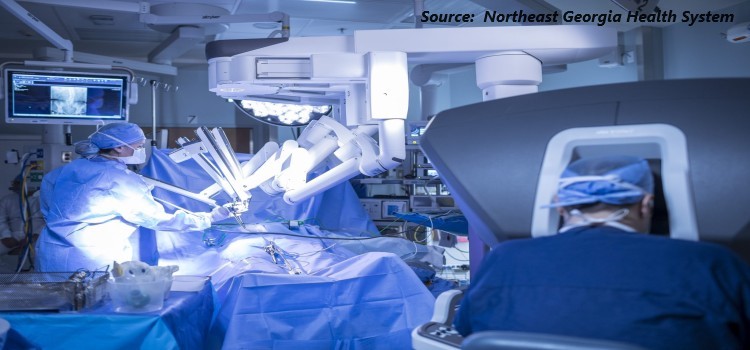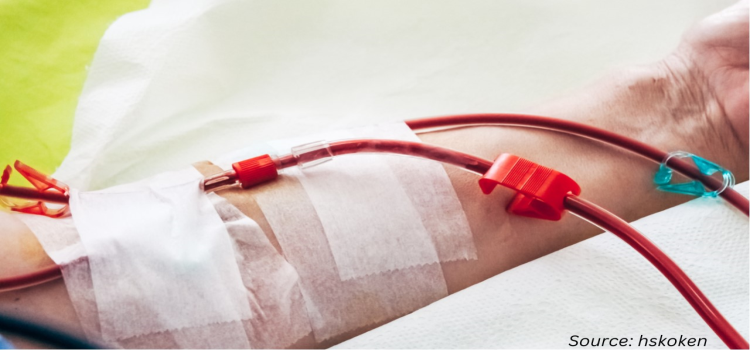
Disabled & Elderly Assistive Device Market by Type (Mobility Impairments, Hearing Impairments, Visual Impairments, Cognitive Impairments, and Self-Care), and End User (Hospitals, Elderly Nursing Homes, Home Care, and Other End Users) – Global Opportunity Analysis and Industry Forecast, 2024–2030
Industry: Healthcare | Publish Date: 15-Jul-2024 | No of Pages: 464 | No. of Tables: 588 | No. of Figures: 288 | Format: PDF | Report Code : N/A
Market Definition
The global Disabled & Elderly Assistive Device Market size was valued at USD 27.77 billion in 2023, and is predicted to reach USD 39.60 billion by 2030, with a CAGR of 5.2% from 2024 to 2030. The disabled & elderly assistive device industry creates specialized tools and systems to enhance independence and quality of life for those with disabilities and older people. It spans a wide range of devices and software addressing physical, sensory, cognitive, and developmental limitations.
This industry sits at the convergence of healthcare, technology, and accessibility, crafting solutions such as mobility aids, communication devices, and home automation systems. Influenced by aging demographics, tech progress, and regulatory trends, it emphasizes inclusivity and continually innovates to meet evolving needs.
According to the World Health Organization (WHO)/United Nations Children’s Fund (UNICEF), over 2.5 billion people need assistive products to live their lives to the fullest. With populations aging and the prevalence of non-communicable diseases rising worldwide, this number will likely rise above 3.5 billion by 2050.
Rising Aging Population Demographics Worldwide Demand Assistive Technology
The global aging population is increasing, which, in turn, creates the demand for assistive technologies. As people live longer, more and more of them are facing age-related challenges, such as mobility limitations and cognitive impairments. Assistive technologies are essential for addressing these issues and assisting older people in keeping healthy and maintaining a high quality of life. These solutions also reduce the burden on caregivers and offer affordable alternatives to institutional care.
According to the latest data published by Visual Capitalist, there were 771 million people aged 65 and older in 2022, accounting for 10% of the world's population. This number is expected to grow to 16% by 2050 and 24% by 2100.By enabling people to age in place and stay connected to their communities, assistive technologies improve the well-being of older adults and contribute to more inclusive and connected societies. Government support and advances in healthcare further highlight the vital role of this industry in promoting the health and independence of our aging population.
Growing Government Support for the Aging Population Drives the Market
Governments worldwide are increasingly supporting older adults, boosting the growth of the disabled & elderly assistive device industry. Governments recognize the importance of providing comprehensive care and support for their elderly citizens, including healthcare, accessibility, and quality of life.
For example, the U.S. Department of Health and Human Services helps promote health and prevent diseases across the lifespan of the country through its National Health Initiatives. As a result, there is a greater emphasis on developing and using assistive technologies that meet the specific needs of older adults. This includes devices and systems to improve mobility, communication, and everyday living.
Financial incentives, subsidies, and policy frameworks further encourage the production and distribution of these technologies. This strong government support fosters innovation in the industry and ensures that older adults have access to cutting-edge solutions that enhance their independence and overall well-being. It acts as a catalyst, driving the disabled & elderly assistive device industry to meet the evolving needs of an aging global population.
High Cost and Lack of Awareness Inhibits the Market Growth
High prices make assistive technologies unaffordable for many people, especially those with low or fixed incomes in the developing and underdeveloped countries. This limits access for a large portion of the population. Many people, caregivers, and even healthcare professionals may not know about the different assistive technologies available or their benefits. This lack of awareness can lead to underuse.
Technological Advancements Revolutionize the Assistive Technology Industry
Technological advancements are transforming assistive technology, making it more personalized, accessible, and productive than before. Notably, artificial intelligence (AI) and machine learning (ML) enable assistive devices to be tailored to individual needs and adapt to changing conditions. The Internet of Things (IoT) and smart home systems also empower users to control their environments more independently than before. Furthermore, wearable devices and sensors monitor health metrics in real-time, providing valuable insights for self-care and overall well-being.
Moreover, robotics-powered mobility aids and exoskeletons augment physical capabilities, while augmented reality (AR) and virtual reality (VR) technologies revolutionize training and rehabilitation programs.These groundbreaking innovations are reshaping the assistive technology industry, expanding the range and efficacy of solutions while making them more accessible to those who need them.
For instance, Acesight is a new wearable low-vision aid from Zoomax that uses augmented reality technology to provide a high-definition display that floats in front of the user's eyes. The device is connected to a controller by a wire, which allows the user to customize the colors and contrast of the display. Acesight is designed to help people with low vision conditions, such as macular degeneration, glaucoma, and diabetic retinopathy. It can magnify objects up to 15 times.
North America is Projected to Dominate the Disabled & Elderly Assistive Device Industry
The North America boasts a well-developed healthcare infrastructure and generates high health spending by individuals, especially in the U.S. and Canada. This includes hospitals, rehabilitation centers, and long-term care facilities that serve as distribution channels for assistive technologies. According to the National Health Expenditure Account (NHEA), in 2021, the U.S. spent USD 4.3 trillion on healthcare, or USD 12,914 per person. This represents 18.3% of the country's gross domestic product (GDP).
Moreover, individuals with chronic diseases, including heart disease, cancer, diabetes, obesity, and others, are a significant force behind the demand for assistive technologies for the disabled and elderly in North America. These tools address mobility and daily living challenges, aiding medication management and independence. They enhance the quality of life, lessen caregiver burdens, and drive the economic growth in the industry.
According to the report published by the American Heart Association (AHA), approximately 133 million Americans, nearly half of the population, grapple with at least one chronic ailment, such as hypertension, heart disease, or arthritis. This is an increase of 15 million from a decade ago, which is projected to rise to 170 million by 2030.
In addition, the regional players are engaged in various business strategies, which, in turn, thrives the demand for the disabled & elderly assistive device market in this region. For instance, in May 2023, Abode Systems, known for do-it-yourself (DIY) home security, integrated Google Nest products. This integration enables users to control Nest devices through the Abode app. This is a major advancement for disabled and elderly individuals, enabling easier home control through voice or gestures.
Asia-Pacific to Witness Substantial Growth in the Market
The disabled & elderly assistive device industry in the Asia-Pacific region is experiencing substantial growth, driven by various factors, such as the rapidly rising aging population that is likely to experience chronic health conditions and mobility issues. Such population creates a need for assistive devices. According to the World Health Organization (WHO), China's aging population is growing rapidly. The total number of people over the age of 60 is estimated to contribute to 28% by 2040, due to increasing lifespans and decreasing birth rates.
Moreover, companies are collaborating with leading universities to develop innovative sensors to monitor older people during hospital stays. This is driving the demand for assistive technologies for the disabled and elderly. For instance, in November 2022, Fujitsu Ltd. partnered with Wakayama Medical University to develop a millimeter-wave sensor to detect falls of elderly patients. It combines precise body posture estimation with AI analysis of complex behaviors, utilizing a millimeter-wave sensor. This camera-free technology aids healthcare providers in swiftly responding to emergencies, such as falls or potential serious injuries, while safeguarding the patient privacy.
Competitive Landscape
Various market players operating in the disabled & elderly assistive device industry include Invacare Corporation, Sunrise Medical LLC, Bausch & Lomb, Inc., Permobil AB, Siemens Healthcare, Freedom Scientific, Inc., William Demant Holding A/S, Starkey Hearing Technologies, GN ReSound Group, Ai Squared, Blue Chip Medical Products, Inc., MED-EL, Liberator Ltd., Drive Medical Design and Manufacturing, Exact Dynamics B.V., and others.
These market players are adopting strategies such as product launches across various regions to maintain their dominance in the disabled & elderly assistive device market. For instance, in July 2022, Sunrise Medical launched Quickie Access, an innovative mobility solution that enhances accessibility and improves the quality of life for individuals with mobility challenges.
Moreover, in August 2021, Invacare Corporation launched the Invacare AVIVA STORM RX, a cutting-edge rear-wheel drive power wheelchair designed to enhance mobility for individuals with specific needs. This innovative offering reflects Invacare's commitment to providing advanced solutions that empower individuals and improve their overall quality of life.
KEY BENEFITS
-
The disabled & elderly assistive device market report provides a quantitative analysis of the current market and estimations throughout 2024-2030 that assists in identifying the prevailing market opportunities to capitalize on.
-
The study comprises a deep dive analysis of the current and future market trends for depicting the prevalent investment pockets in the industry.
-
The information related to key drivers, restraints, and opportunities and their impact on the market is provided in the report.
-
The competitive analysis of the key players along with their market share in the disabled & elderly assistive device market.
-
The SWOT analysis and a Porter’s Five Forces model is elaborated on in the study.
-
Value chain analysis in the market study provides a clear picture of the stakeholders’ roles.
DISABLED & ELDERLY ASSISTIVE MARKET KEY SEGMENTS
By Type
-
Living Aids
-
Hearing Aids
-
Behind-the-ear Aids (BTE)
-
Receiver-in-the-Ear Aids (RITE)
-
In-the-Ear Aids (ITE)
-
Bone Anchored Hearing Aids (BAHA)
-
Canal Hearing Aids
-
Cochlear Implants
-
- Reading and Vision Aids
-
Braille Translators
-
Video Magnifiers
-
Reading Machines
-
Others
-
-
Mobility Aids
-
Walkers & Rollators
-
Canes & Walking Sticks
-
Crutches
-
Transfer Lifts or Patient Mechanical Lift Handling
-
Door Openers
-
Others
-
-
Medical Furniture
-
Medical Beds
-
Door Openers
-
Medical Furniture Accessories
-
Riser Reclining Chairs
-
Others
-
-
Bathroom Safety Equipment
-
Shower Chairs
-
Commodes
-
Ostomy Products
-
Bars, Grips, & Rails
-
By End User
-
Hospitals
-
Elderly Nursing Homes
-
Home Care
-
Other End Users
By Region
-
North America
-
The U.S.
-
Canada
-
Mexico
-
-
Europe
-
The U.K.
-
Germany
-
France
-
Italy
-
Denmark
-
Netherlands
-
Finland
-
Sweden
-
Norway
-
Rest of Europe
-
-
Asia-Pacific
-
China
-
Japan
-
India
-
South Korea
-
Australia
-
Indonesia
-
Singapore
-
Taiwan
-
Thailand
-
Vietnam
-
Rest of Asia-Pacific
-
-
Rest of World (RoW)
-
Latin America
-
Middle East
-
Africa
-
REPORT SCOPE AND SEGMENTATION:
|
Parameters |
Details |
|
Market Size in 2023 |
USD 27.77 Billion |
|
Revenue Forecast in 2030 |
USD 39.60 Billion |
|
Growth Rate |
CAGR of 5.2% from 2024 to 2030 |
|
Analysis Period |
2023–2030 |
|
Base Year Considered |
2023 |
|
Forecast Period |
2024–2030 |
|
Market Size Estimation |
Billion (USD) |
|
Growth Factors |
Rising aging population demographics worldwide demand assistive technology Growing government support for the aging population |
|
Countries Covered |
27 |
|
Companies Profiled |
15 |
|
Market Share |
Available for 10 companies |
|
Customization Scope |
Free customization (equivalent up to 80 working hours of analysts) after purchase. Addition or alteration to country, regional, and segment scope. |
|
Pricing and Purchase Options |
Avail customized purchase options to meet your exact research needs. |
KEY PLAYERS
-
Invacare Corporation
-
Sunrise Medical LLC
-
Bausch & Lomb, Inc.
-
Permobil AB
-
Siemens Healthcare
-
Freedom Scientific, Inc.
-
William Demant Holding A/S
-
Starkey Hearing Technologies
-
GN ReSound Group
-
Ai Squared
-
Blue Chip Medical Products, Inc.
-
MED-EL
-
Liberator Ltd.
-
Drive Medical Design and Manufacturing
-
Exact Dynamics B.V.




 Speak to Our Analyst
Speak to Our Analyst


































